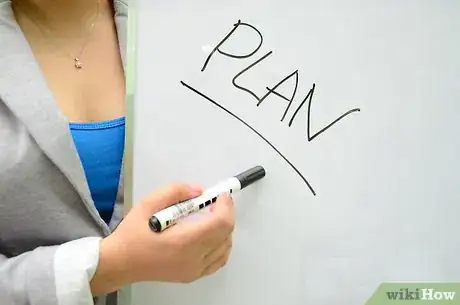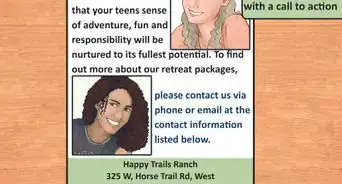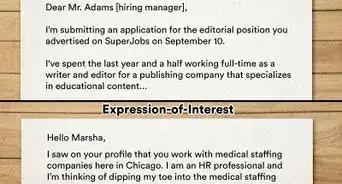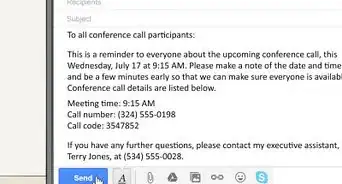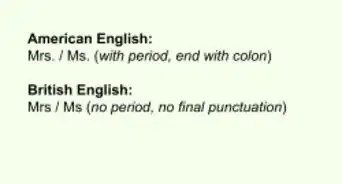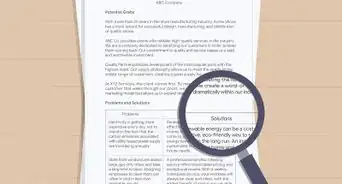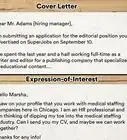wikiHow is a “wiki,” similar to Wikipedia, which means that many of our articles are co-written by multiple authors. To create this article, volunteer authors worked to edit and improve it over time.
This article has been viewed 25,202 times.
Learn more...
If you are part of a conference or other time-constrained project in which you want others to contribute their work, you need to invite them to participate, in a clear and compelling way. Especially for conferences, grants and academic projects, a "Call for Participation," also known as "Call for Papers" or "Request for Proposals" is one of the most common formats for an invitation. The most important information about the event and what is being sought are in the first section , followed by complete details for how to submit proposals, with a deadline for submissions.
Steps
-
1Plan for outside contributors to a conference program or other project. The call for participation in many ways acts as a blueprint. In conferences, the call cannot be sent out without having a plan for the schedule. Planning should include clear definitions of what types of sessions will be offered, for how long, on which days.
-
2Identify your audience for the invitations. Identifying the people from whom you want contributions is also fundamental in the process, and helps guide the style of writing. You can brainstorm lists of possibilities, from general categories (eg, researchers in positive psychology) to specifics (eg, specific people you have contact information for).Advertisement
-
3Consider your potential contributors needs. Brainstorm based on what you know about those who you'll be inviting to contribute. To help motivate them to take the time to submit a proposal, they need to see the benefit they could get. For example, in academia, conference presentations and publications are important in building credibility and often required in tenure decisions so many proposals come with hopes of being able to add the work done to a CV.
-
4Outline a first draft. The sections common to Calls for Participation include:
- Title (including "Call for Participation to ___"), and location and dates of the main event, and deadlines for submission of proposals, including the time of day. This makes it possible for people to quickly evaluate whether they can make the commitment to the event and to the time involved in submitting the proposal.
- Introductory text - phrased to capture your readers' interest, referencing issues they care about, with an overview of the event or project - setting expectations for what they could apply to be part of.
- Description of types of proposals sought - including content and format. For a conference this would include descriptions of session formats and what is expected for each (eg, talks, demonstrations, interactive workshops, posters), including the length of time a presenter would be expected to work with.
- A checklist of steps for submitting a proposal, including a basic list of the elements that are needed, including word counts per section. This should include the deadlines (again), the related links to more detailed information and online submission forms.
- Criteria for acceptance - beyond complying with the basics of the proposal format, what elements would the best proposals be expected to include. This acts as a guide or rubric for the proposal writers.
- Relevant links to FAQs, past events and contact information in case someone has questions.
-
5Have draft reviewed by others before sending it out. All too frequently, calls for participation can be confusing or easily misinterpreted. Asking someone familiar with the project and audience to review it will improve the clarity and quality of what you send out, and reduce the likelihood of having to revise and resend it.
-
6Post it on your website. Right before you send out the Call for Participation, it's good to make sure it is easy to find online
-
7Test the submission process. Make sure you could complete the steps and that all relevant links and forms work as you'd planned.
-
8Draft the email introduction to the Call. Before people read the call, whether it comes within an email or as an attachment, you'll need a good subject line and opening within the email in order to get their attention. Include date information as early as possible - this helps them more quickly decide whether the email is something they want to look at more closely. Also request that they forward it to appropriate colleagues.
-
9Send it out to your target audience. In any mass mailing you can expect some "bounce backs" from bad email addresses and anti-spam auto-responders. Determine how much time you want to spend reviewing and addressing those.
-
10Schedule a second time for re-sending it, and potentially a third if the submissions you are receiving are not sufficient.
-
11Have a plan in place for reviewing submissions and methods for responding to each submitter.










